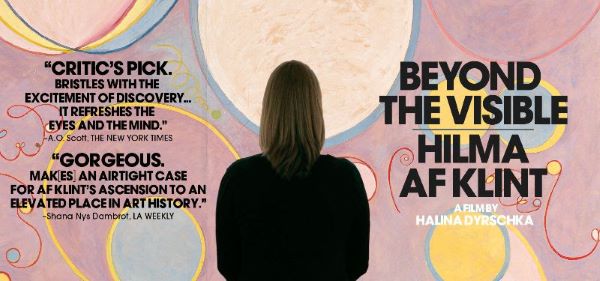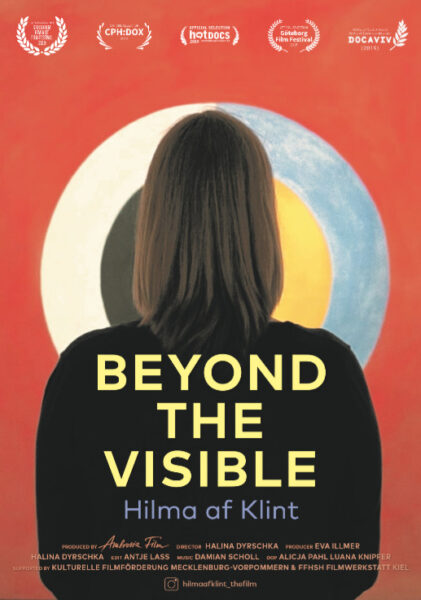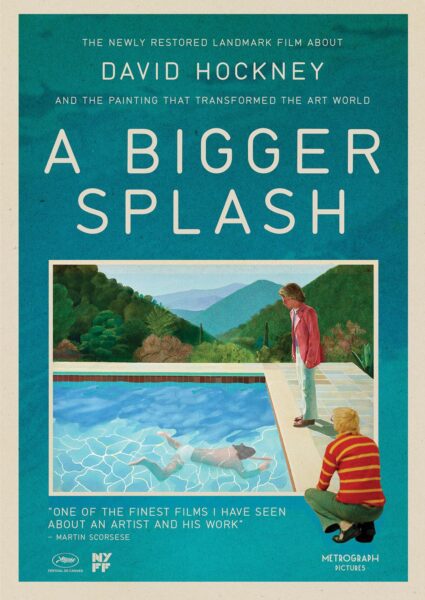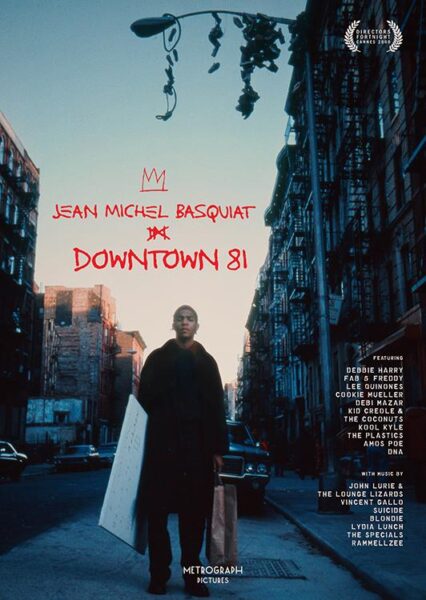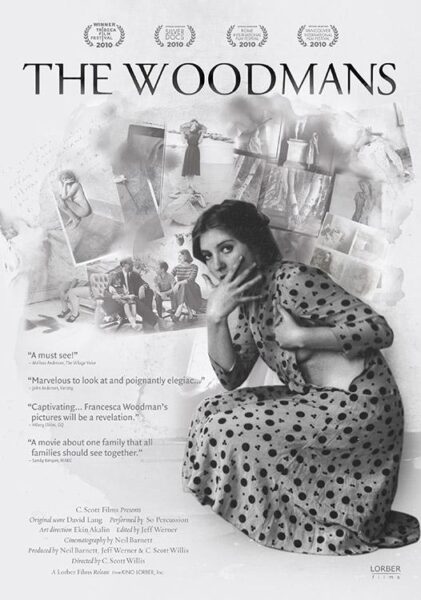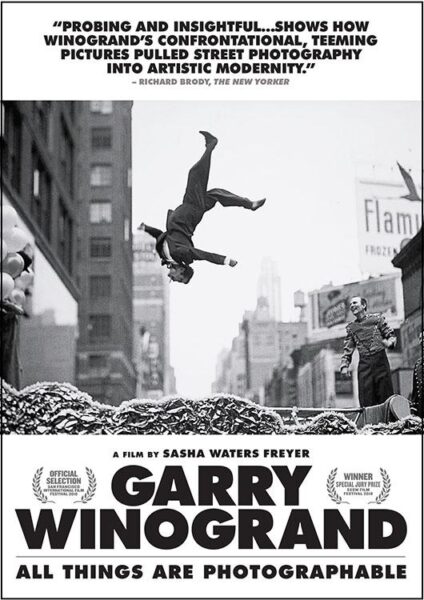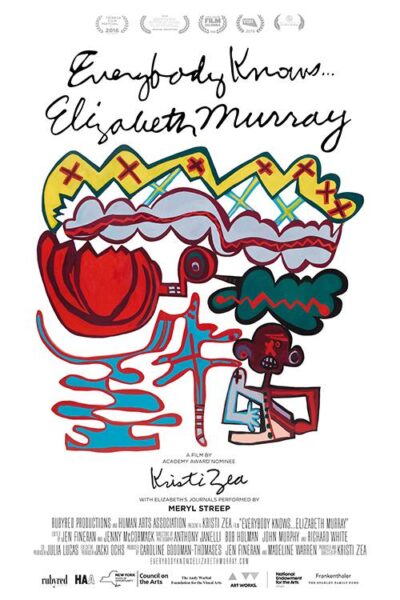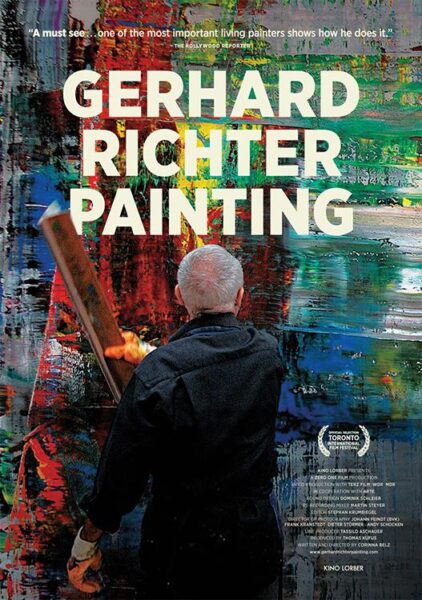AWESOME DOCS ABOUT ARTISTS
NOW AVAILABLE ON KINO LORBER
As our readers know, Stage and Cinema has been trumpeting documentaries as the most engaging and affecting movies made in our times. And these documentaries about artists are no different. Not only will you increase your knowledge of fine art, but your jaw will drop at the explosive humanity of the subjects. Just click on the titles below to take you to Kino Now. Enjoy!
Beyond the Visible: Hilma af Klint (2019)
Directed by Halina Dryschka
Hilma af Klint was an abstract artist before the term existed, a visionary, trailblazing figure who, inspired by spiritualism, modern science, and the riches of the natural world around her, began in 1906 to reel out a series of huge, colorful, sensual, strange works without precedent in painting. The subject of a recent smash retrospective at the Guggenheim Museum, af Klint was for years an all-but-forgotten figure in art historical discourse, before her long-delayed rediscovery. Director Halina Dryschka’s dazzling, course correcting documentary describes not only the life and craft of af Klint, but also the process of her mischaracterization and erasure by both a patriarchal narrative of artistic progress and capitalistic determination of artistic value. Beyond the Visible also has the distinction of being the most popular film released to date in the Kino Marquee virtual cinemas. “One of the best films I’ve seen about fine art. It casts an entrancing spell that allows the staggering depth of its subject’s work to consume us.” — Matt Fagerholm, RogerEbert.com.
A Bigger Splash (1974) — NEWLY RESTORED!
Directed by Jack Hazan
An intimate and innovative film about English-born, California-based artist David Hockney, his circle of friends, and the agonized end of the lingering affair between him and his muse, an American named Peter Schlesinger. The result is at once a time capsule of hedonistic gay life in the 1970s, an honest-yet-tender depiction of gay male romance that dispenses with the then-current narratives of self-hatred and self-pity, an invaluable view of art history in action, and a record of artistic creation that is itself a work of art.
Downtown 81 (1981)
Directed by Edo Bertoglio
In 1981, writer and Warhol associate Glenn O’Brien, Swiss photographer Edo Bertoglio, and Jean-Michel Basquiat, a graffiti innovator and noise music artist who’d just begun to exhibit his paintings, hit the streets of lower Manhattan to make a movie about the bombed out bohemia that they knew. Downtown 81, which follows Basquiat trying to move a painting while hustling for a place to sleep, became a window on a lost world of life on the margins and crazy creative ferment. Featuring John Lurie, Fab Five Freddy, and Debbie Harry, with musical performances by DNA, James White and the Blacks, and Kid Creole and the Coconuts’”and Manhattan in all its mangy glory.
The Woodmans (2010)
Directed by C. Scott Willis
The tragic story of Francesca Woodman, a young photographer renowned for her extraordinary nude self-portraits, is also the story of her brilliantly artistic family. With The Woodmans, director C. Scott Willis shows how the struggle for fame in the high-stakes world of art resulted in tragedy, and then in healing and redemption. As a family, the Woodmans are noted for their talent. Betty Woodman, in particular, is an internationally renowned ceramicist whose work has been shown at The Metropolitan Museum of Art. But it is the fate of Francesca, the youngest Woodman, that will haunt them over the years.
Garry Winogrand: All Things Are Photographable (2018)
Directed by Sasha Waters Freyer
Described as a “poet”, an “athlete”, or a “philosopher” of photography, Garry Winogrand harnessed the serendipity of the streets to capture the American 1960s and ’70s. His Leica M4 snapped spontaneous images of everyday people, from the Mad Med era of New York to the early years of the Women’s Movement to post-Golden Age Hollywood, all while observing themes of cultural upheaval, political disillusionment, intimacy and alienation. Once derided by the critics, Winogrand’s “snapshot aesthetic” is now the universal language of contemporary image making.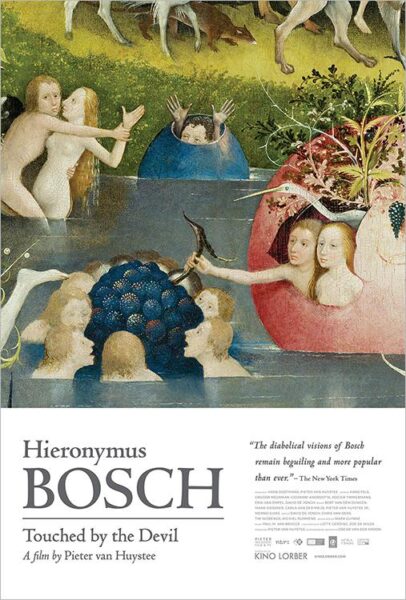
Hieronymus Bosch: Touched by the Devil (2016)
Directed by Pieter van Huystee
In 2016, the Noordbrabants Museum in the Dutch city of Den Bosch held a special exhibition devoted to the work of Hieronymus Bosch, who died 500 years ago. This late-medieval artist lived his entire life in the city, causing uproar with his fantastical and utterly unique paintings in which hell and the devil always played a prominent role. In preparation for the exhibition, a team of Dutch art historians crisscrosses the globe to unravel the secrets of his art.
Everybody Knows…Elizabeth Murray (2017)
Directed by Kristi Zea
An intimate portrait of the groundbreaking artist Elizabeth Murray that explores the relationship between Murray’s family life and career and reconsiders her place in the contemporary art history. Murray’s personal journals, voiced in the film by Meryl Streep, give viewers a privileged window into Murray’s internal struggles and incredible ambition. Verité footage of Murray in her studio and home videos help round out this profile of her life and exclusive interviews with art world luminaries including Chuck Close, Vija Celmins, Adam Weinberg, Robert Storr, and Roberta Smith provide the historical backdrop for the New York art scene.
Gerhard Richter Painting (2012)
Directed by Corinna Belz
Legendary German painter Gerhard Richter granted filmmaker Corinna Belz access to his studio in the spring and summer of 2009, where he was working on a series of large abstract paintings. In quiet, highly concentrated images, the documentary provides a fly-on-the-wall perspective of the very personal, tension-filled process of artistic creation. Richter is his own worst critic, destroying multiple canvases before his remarkable creative spirit takes hold, and the astonishing final compositions emerge.
